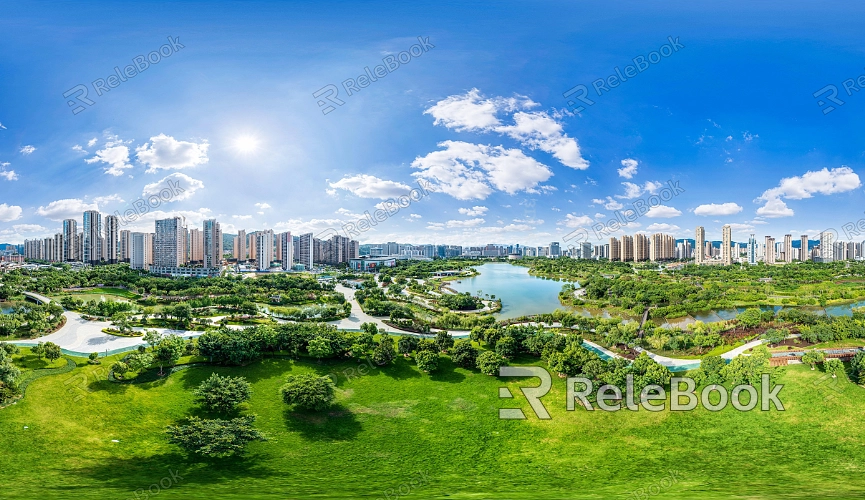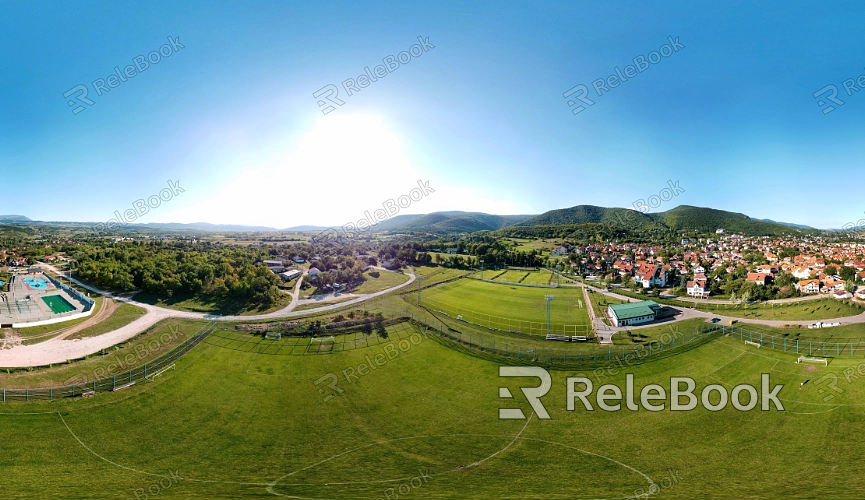How to Optimize HDR Textures for Performance in Unity
HDR textures can significantly enhance lighting effects, creating a more realistic visual experience. However, due to their high resolution and complex lighting data, using HDR textures in Unity can impact performance, especially in large or complex scenes. Therefore, optimizing HDR textures in Unity is a challenge that designers must address. This article will explore how to implement effective optimization strategies to improve overall project performance while maintaining visual quality.

1.Choosing the Right Resolution
Adjusting Resolution Based on Needs: The resolution of HDR textures directly influences both their visual impact and resource consumption within a scene. Selecting the appropriate resolution for different scenes and objects is crucial. For distant views or areas where high precision isn't necessary, reducing the resolution of HDR textures can help decrease GPU and memory usage. Conversely, high-resolution textures should be used for key areas or objects that require detailed visual representation to ensure the best visual outcome.
Utilizing Multiple Resolutions: Employing multiple resolution textures within the same project can optimize performance by using higher resolution textures for objects close to the camera and lower resolution textures for distant objects.
2.Compression and Format Selection
Using Suitable Compression Formats: Unity supports various texture compression formats, some of which can significantly reduce the size of HDR textures without drastically affecting their visual quality. Choosing the right compression format can save storage space and reduce runtime memory load. For example, designers can use formats like BC6H or ASTC to compress HDR textures, thereby enhancing performance while preserving visual integrity.
Avoiding Over-Compression: While compression improves performance, over-compressing textures can lead to color distortion and loss of detail. Designers need to find a balance between compression rate and visual quality to ensure that the textures maintain their intended appearance while still benefiting from improved performance.
3.Optimizing Loading and Memory Management
Loading HDR Textures on Demand: In large or complex scenes, it's unnecessary to load all HDR textures at once. By using on-demand loading techniques, designers can load specific HDR textures only when needed and unload them when they're no longer required, thus conserving memory resources. Unity's Asset Bundles or Addressables system can be employed to manage texture loading and unloading more efficiently.
Managing Texture Pools Efficiently: In projects with high-density HDR texture usage, effective texture pool management is essential. Properly managing the size of the texture pool ensures that frequently used textures are readily accessible, while less commonly used textures can be cleared from memory to prevent excessive resource usage.

4.Using the Appropriate Rendering Pipeline
Selecting the Right Rendering Pipeline: Unity offers multiple rendering pipelines, such as the Built-in Pipeline, Universal Render Pipeline (URP), and High Definition Render Pipeline (HDRP). These pipelines perform differently when handling HDR textures. For performance-critical mobile projects, URP is a good choice as it balances visual quality and performance. For projects requiring high-quality visual effects, HDRP is the better option, though it demands more from the hardware.
Adjusting Rendering Settings: When using HDRP, performance can be optimized by tweaking rendering settings. For instance, reducing the number of light bounces, lowering reflection probe resolutions, and adjusting volumetric lighting and post-processing effects can all contribute to improved performance.
5.Reducing Unnecessary HDR Texture Usage
Selective Use of HDR Textures: Not every lighting effect in a project requires HDR textures. In some cases, standard LDR (Low Dynamic Range) textures or other lighting techniques may suffice. By minimizing unnecessary HDR texture usage, designers can significantly reduce performance overhead.
Utilizing Blended Techniques: HDR textures can be combined with other lighting techniques to achieve both enhanced visual effects and optimized performance. For instance, using HDR textures for key light sources or reflective areas while applying lighter lighting methods in other regions can strike a balance between performance and visual quality.
6.Effective Use of Light Probes and Reflection Probes
Optimizing Light Probe Settings: Light probes capture ambient lighting information, which can enhance the performance of HDR textures. In complex scenes, an excessive number of light probes can increase performance costs. Designers should strategically place light probes based on the scene's actual needs, avoiding unnecessary duplication.
Configuring Reflection Probes Efficiently: Reflection probes generate reflections within a scene, particularly when using HDR textures. Reducing the resolution or number of probes can help mitigate their impact on performance. Additionally, ensuring that reflection probes cover the necessary areas can capture the essential ambient lighting data without overburdening the system.
By implementing these optimization strategies, designers can effectively utilize HDR textures in Unity while enhancing project performance. This not only helps maintain smooth operation in demanding scenes but also ensures that the final visual effects meet the desired standards.
If you're looking for high-quality HDR texture resources to optimize your project’s visuals, Relebook is an ideal choice. Relebook offers a vast array of textures and models that can help you achieve outstanding visual effects in your projects. Visit Relebook to explore more top-tier resources and elevate your project to the next level.

